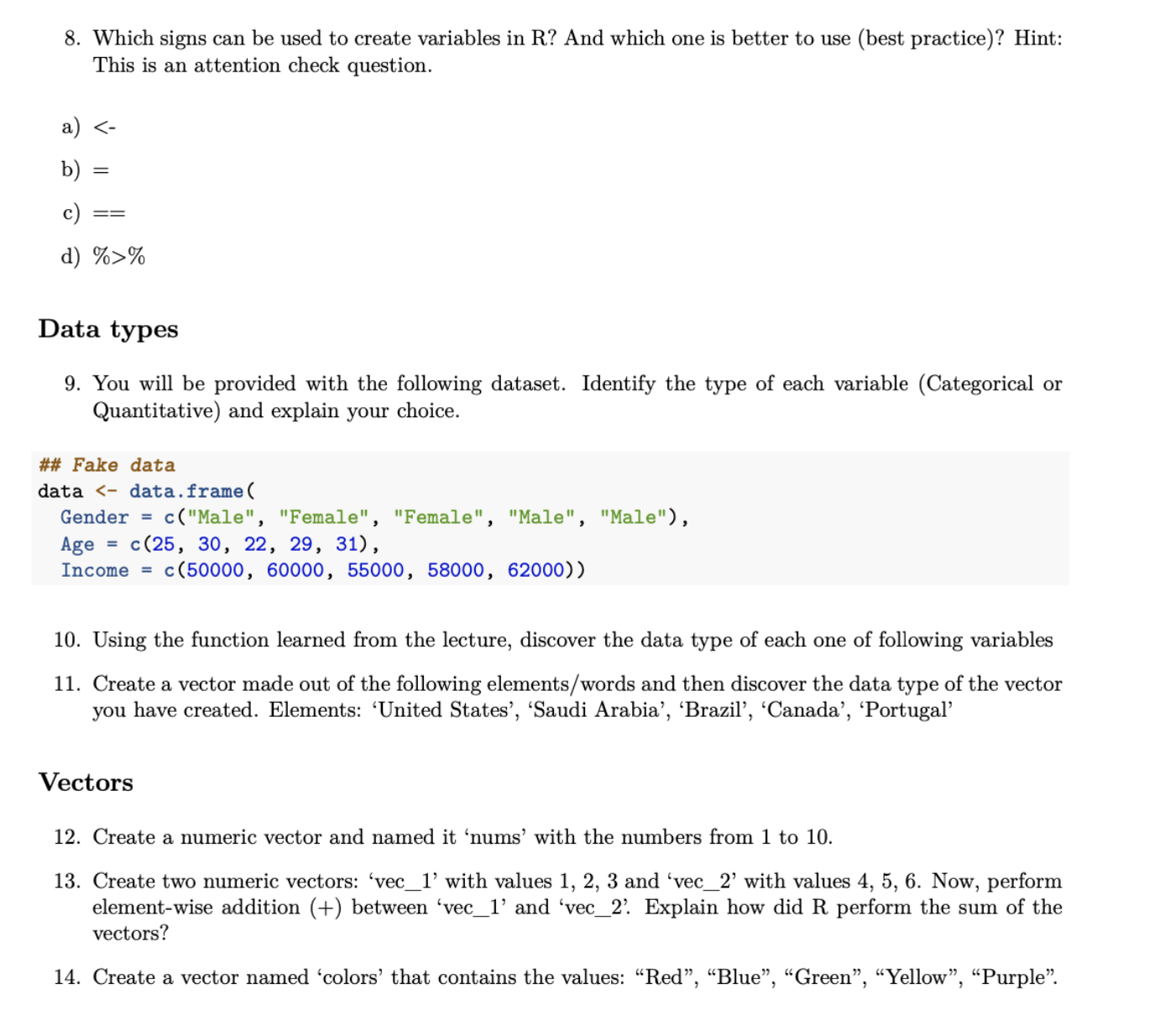Home /
Expert Answers /
Computer Science /
8-which-signs-can-be-used-to-create-variables-in-r-and-which-one-is-better-to-use-best-practice-pa593
(Solved): 8. Which signs can be used to create variables in R? And which one is better to use (best practice) ...

8. Which signs can be used to create variables in R? And which one is better to use (best practice)? Hint: This is an attention check question. a) b) c) d) Data types 9. You will be provided with the following dataset. Identify the type of each variable (Categorical or Quantitative) and explain your choice. \#\# Fake data data data.frame( Gender , "Female", "Female", "Male", "Male"), Age , Income \#\#ake data data data.frame ( Gender = c("Male", "Female", "Female", "Male", "Male"), Age , Income 10. Using the function learned from the lecture, discover the data type of each one of following variables 11. Create a vector made out of the following elements/words and then discover the data type of the vector you have created. Elements: 'United States', 'Saudi Arabia', 'Brazil', 'Canada', 'Portugal' Vectors 12. Create a numeric vector and named it 'nums' with the numbers from 1 to 10. 13. Create two numeric vectors: 'vec_1' with values and 'vec_2' with values . Now, perform element-wise addition between 'vec_1' and 'vec_2'. Explain how did R perform the sum of the vectors?